
Annual Meeting & Village Awards
On June 14, 2016 GVSHP held its 36th Annual Meeting and 26th Annual Village Awards in the landmarked Auditorium of The New School. We looked back on GVSHP�s past year of work to protect the architectural heritage and cultural history of Greenwich Village, the East Village, and NoHo and celebrated this year�s awardees:
East Village Meat Market
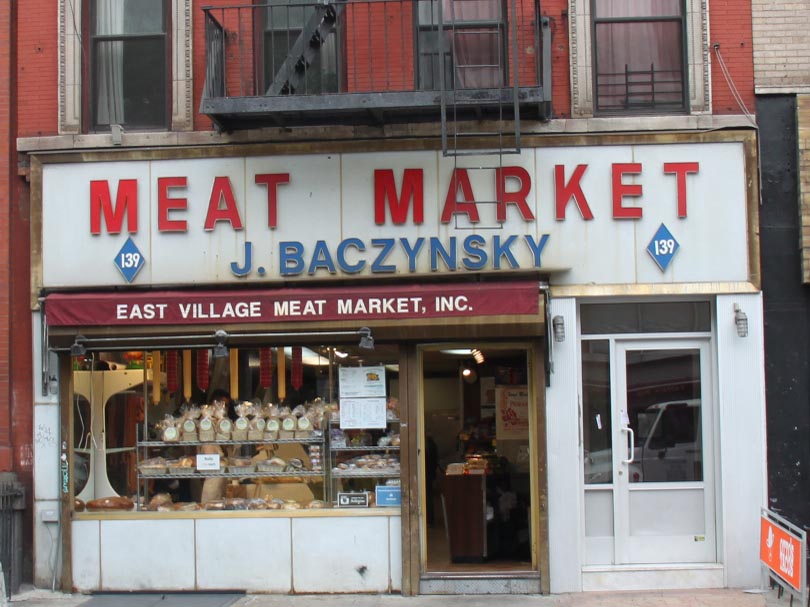
Read about the meat market in Off the Grid
Julian Baczynsky came to the United States in 1949 and opened his first store on Avenue B and 10th Street in 1955. He opened the East Village Meat Market in 1970. At the time, the neighborhood had a large Ukrainian and Polish population, who were happy to have a store that featured the foods they had grown up with.
Mr. Baczynsky turned 94 in 2016. He has been a steadfast supporter of St. George's Ukrainian Church on East 7th Street, and singlehandedly supports an orphanage in the Ukraine.
Even with many immigrant residents gone from the East Village, the store continues as a de facto community center for Ukrainian and Polish customers, particularly around the holidays of Christmas and Easter. Orthodox Easter is the busiest time of the year – customers travel from far-flung areas to procure the traditional food needed for their celebrations. During this period, the smokers are running 24/7, and the store is packed.
The store is renowned for its smoked meats and sausages. The smell of smoked meats that permeates the store is indescribable and intoxicating. The store uses five large German machines from the 1950’s including a meat grinder, slicer, mixer, chopper and sausage maker.
The hams that are cured at the meat market are sourced from small family-owned farms that pay close attention to the nutrition, exercise and living conditions afforded to the animals.
GVSHP is proud to recognize the East Village Meat Market for 46 years of providing an unparalleled array of food products and maintaining a tradition of old world service in the East Village.
|
Jaffe Art Theater Interior Restoration
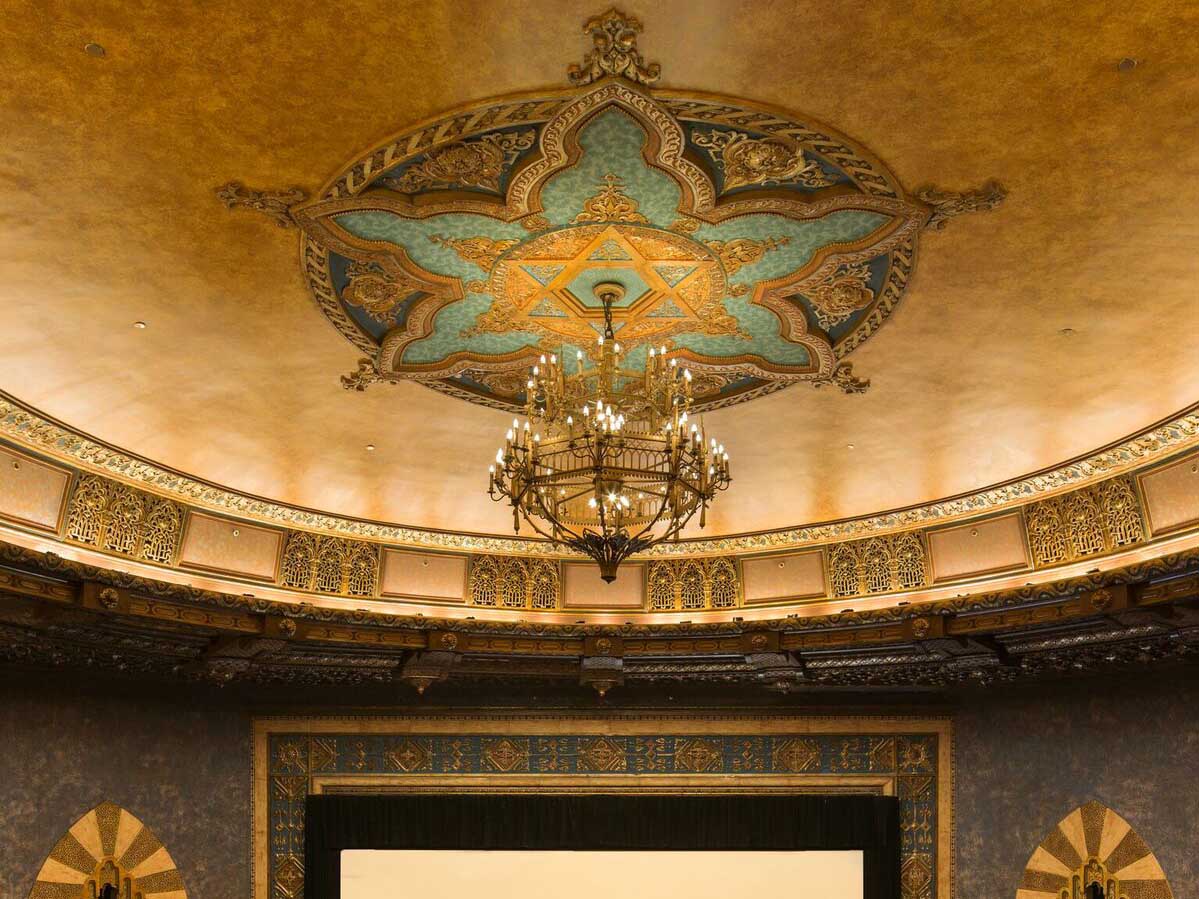
Read about the restoration in Off the Grid
This award recognizes an amazing interior restoration of a building, located at 12th Street and Second Avenue, that is both an interior and exterior landmark. In the first few decades of the Twentieth Century, a stretch of Second Avenue in the East Village was referred to as the “Jewish Rialto” because of the many thriving Yiddish-language theaters. In 1925, developer Louis N. Jaffe built a theater devoted to the work of Maurice Schwartz, a Yiddish-speaking actor of such renown that he was often referred to simply as “Mr. Second Avenue”. Jaffe hired the theater architect Harrison Wiseman to create the stunning neo-Moorish Jaffe Art Theater at 189 Second Avenue.
The theater was listed on both the New York State and National Registers of Historic Places in 1985 as the “Yiddish Art Theatre.” After decades of use as a Yiddish and later Off-Broadway theater, the building was converted to a cinema in 1991.
In the early 2000's, it became clear that the ornate plaster ceiling of the interior landmark auditorium was deteriorating, and the owners undertook an extensive restoration.
CTA Architects, a NYC-based architectural firm specializing in historic preservation, restoration, rehabilitation, and new design, was brought on to complete the project.
The work included the restoration of the main auditorium’s ornamental plaster ceiling and dome. Above the ceiling, the plaster panels were suspended by wires or thin cables to structure that needed to be reinforced for safety reasons, as well as to ensure the integrity and longevity of the ceiling itself. The architects researched possible solutions and specified a liquid polymer product containing shredded fiberglass that was applied to the top surface of the ceiling to improve its cohesion and rigidity.
Some ornamental ceiling panels were removed, reinforced, cleaned, and reset. Damaged and missing panels were replaced and in-painted, which is a process where missing panels are painted to match the surrounding existing panels. The ceiling’s iron hanging structure was reinforced, and the central dome was restored and repainted.
GVSHP recognizes property owners Reading international and CTA Architects for their exquisite interior restoration of one of New York’s great landmarked public spaces and most cherished cultural touchstones.
|
Julius' Bar
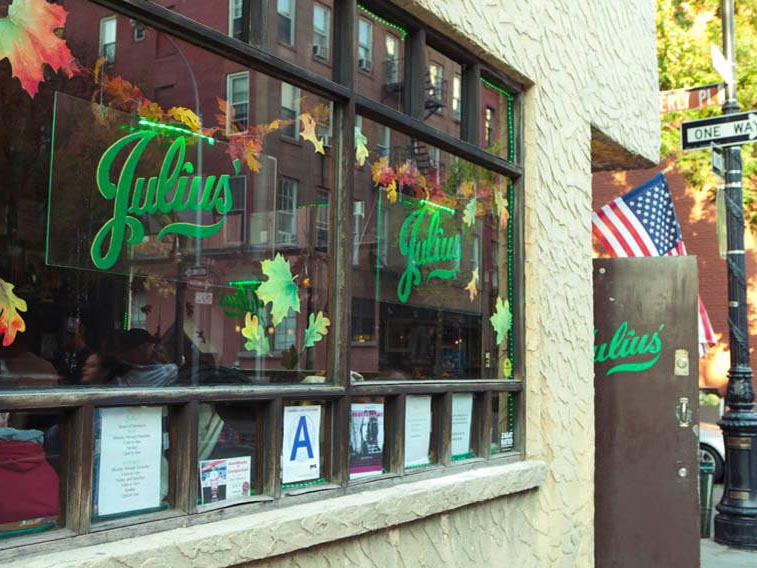
Read about Julius' in Off the Grid
Julius’ Bar at Waverly and 10th Street has many layers of history. Julius is located in a 190 year old building, the ground floor of which has served as a bar since 1864, making it one of the oldest continuously operating bars in New York.
It has been called Julius’ since the 1920’s. During Prohibition, it was a speakeasy, and was frequented by many of the jazz and literary greats of its time.
Julius’ has served a predominantly gay clientele since the 1950’s, and it is one of the oldest gay bars in New York City.
The interior of the bar is a virtual time capsule, entirely intact from the early 20th century, with its carved wooden bar, and stools and seats made from wooden barrels and casings from long shuttered NYC breweries.
Julius’ supports many charities including the American Red Cross, AIDS Walk NY, Bailey House, and St. Jude’s Children’s Research Hospital.
Julius’ claimed a unique role in civil rights history on April 21, 1966, when three activists from the Mattachine Society decided to challenge prohibitions on gay bars and other gathering spaces for gay people by openly declaring themselves to be gay and asking to be served at the bar. At the time, a bar could, and often was, closed down simply for knowingly serving gay people. The men were refused service, a moment caught on film by Village Voice photographer Fred W. McDarrah. Covered by the New York Times, among others, the Sip-in led to successful challenges of these discriminatory state regulations, a full three years before the Stonewall Riots. The bar continues to celebrate its history with monthly Mattachine parties.
Under the ownership of Helen Buford and her husband, Julius’ has supported efforts to landmark the bar and get it listed on the State and National Registers of Historic Places. This April, on the 50th anniversary of the Sip-In (as the 1966 civil disobedience action was called), Julius’ was listed on the State and National Registers of Historic Places.
Julius’ historian Tom Bernadin has been working to record and celebrate Julius’ history for decades. On April 21, 2016, Tom and Helen helped spearhead, along with GVSHP and the NYC LGBT Historic Sites Project, a commemoration of the Sip In, which also served as a call for landmark designation of the site.
GVSHP is proud to honor Julius’ for preserving and celebrating the heritage of one of New York’s oldest bars and one of the true pioneers of the LGBT civil rights movement.
|
Smalls Jazz Club
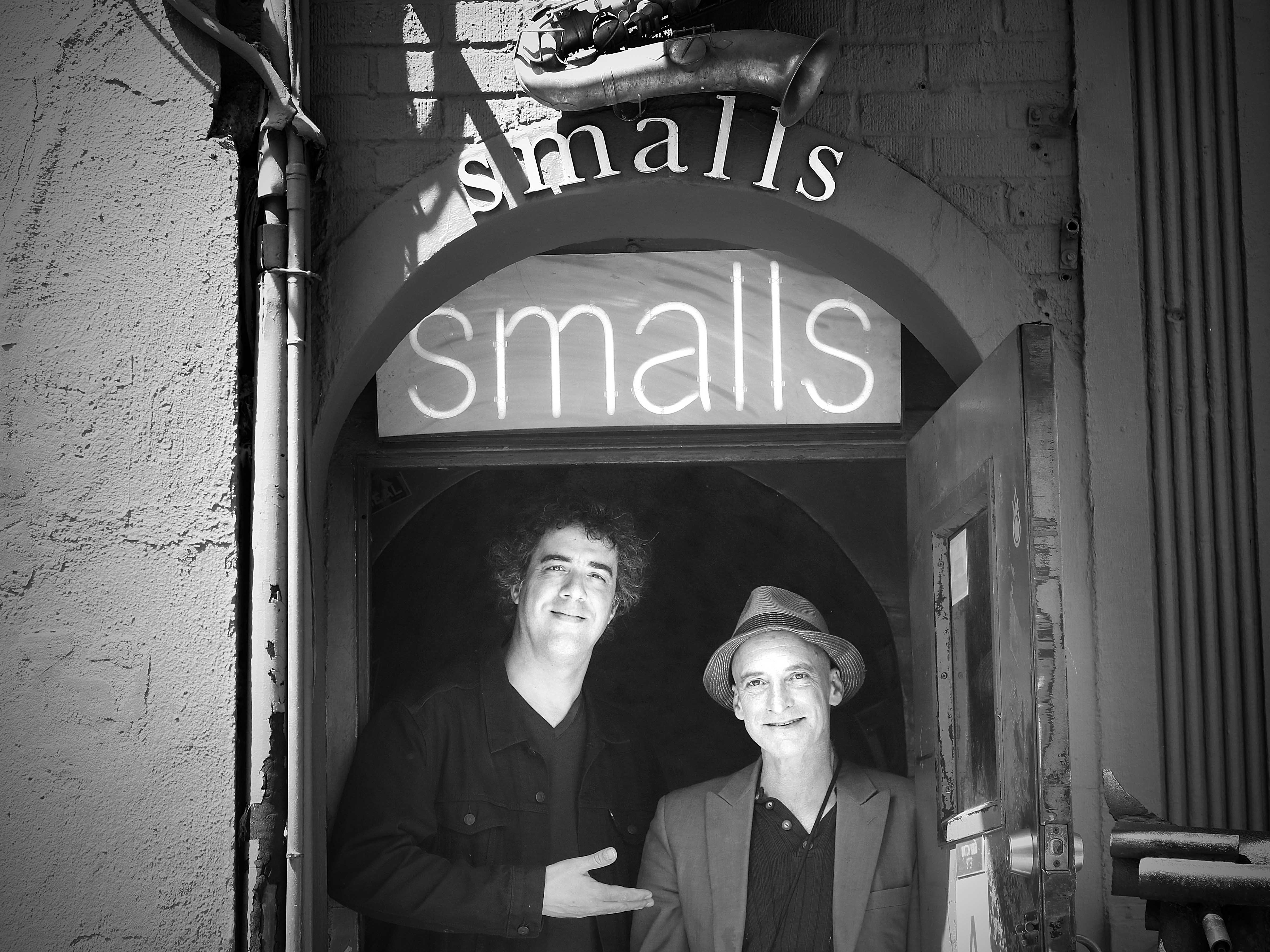
Read about Smalls in Off the Grid
These awardees' name may imply a diminutive stature, but they have had an outsized impact upon Jazz in Greenwich Village and beyond. Smalls Jazz Club is located at 183 West 10th Street, and has become a mecca for jazz enthusiasts.
Smalls is owned by Spike Wilner and Mitch Borden. Mitch opened the club in 1994 as a BYOB place for jazz lovers, motivated by a love of jazz rather than profit. The club closed in 2002, but re-opened in 2004 with Mitch as the manager. Spike and Mitch eventually became the owners and managers in 2011.
Smalls live streams every performance for free over their website. They maintain an extensive archive of every performance from the club going back to 2007. Those archives are accessible by subscription, with the proceeds shared by the club and the artists whose recordings are accessed.
Smalls has helped nurture and further the careers of popular Jazz musicians such as Brad Mehldau, Kurt Rosenwinkle, Chris Potter, and Peter Bernstein, among many others.
The partners have also opened a companion venue nearby called Mezzrow, which is similar to Smalls but solely dedicated to piano jazz. Spike and Mitch’s passion for jazz is clear in every aspect of their management, and they clearly appreciate that jazz is an essential element of Greenwich Village history. The operation of their business is fundamentally about the music. They are extremely proud and aware of their role in maintaining and sharing that history while being part of that tradition.
GVSHP is thrilled to present Smalls Jazz Club with a 2016 Village Award for becoming a great incubator for live jazz in Greenwich Village, providing invaluable live streaming, a performance archive, and revenue-sharing with their artists.
|
Steve Cannon

Read about Steve Cannon in Off the Grid
Steve Cannon has experienced many lives and adventures that he doesn’t mind telling you about, including the fact that it all started in New Orleans, where he was the youngest of 8 children. Influenced by his family’s penchant for storytelling, recitation, and music, he has always pursued writing and cultural endeavors.
When Steve arrived in New York City in the early 1960’s, his only interest was becoming part of the downtown scene where writers, artists, musicians, dancers, photographers and those expressing their artistic visions could gather and exchange ideas. He has lived in the East Village ever since, over the years mixing with such legendary figures as Norman Mailer, Miles Davis, Cecil Taylor, Leonard Bernstein, Charlie Parker, LeRoi Jones, George Corso, Allen Ginsberg, David Henderson, Henry Threadgill, and EL Doctorow.
Steve has been instrumental in the founding of many of the Lower East Side’s and East Village’s signature cultural institutions, including the Charlie Parker Jazz Festival, the Lower East Side Arts Festival, the Howl Festival (of which he is the was Poet Laureate), and the Nuyorican Poets Café.
But Steve is perhaps most closely associated with A Gathering of the Tribes, ‘an arts and cultural organization dedicated to excellence in the arts from a diverse perspective’. Tribes was located for many years in Steve’s apartment, gallery, and gathering space on 3rd Street and Avenue D, in an historic Greek Revival house built by the founder of The Nation magazine, Hamilton Fish. The literary manifestation of the group is the Gathering of the Tribes Magazine, an eclectic multi-cultural zine currently in its 15th edition with global influence and distribution. As their website states, Tribes was conceived as a venue for underexposed artists, as well as a networking center and locus for the development of new talent.
GVSHP is honored to present Steve Cannon with a 2016 Village Award for his lifelong commitment to the art of poetry and his contributions to East Village cultural organizations including A Gathering of The Tribes.
|
The Strand Bookstore
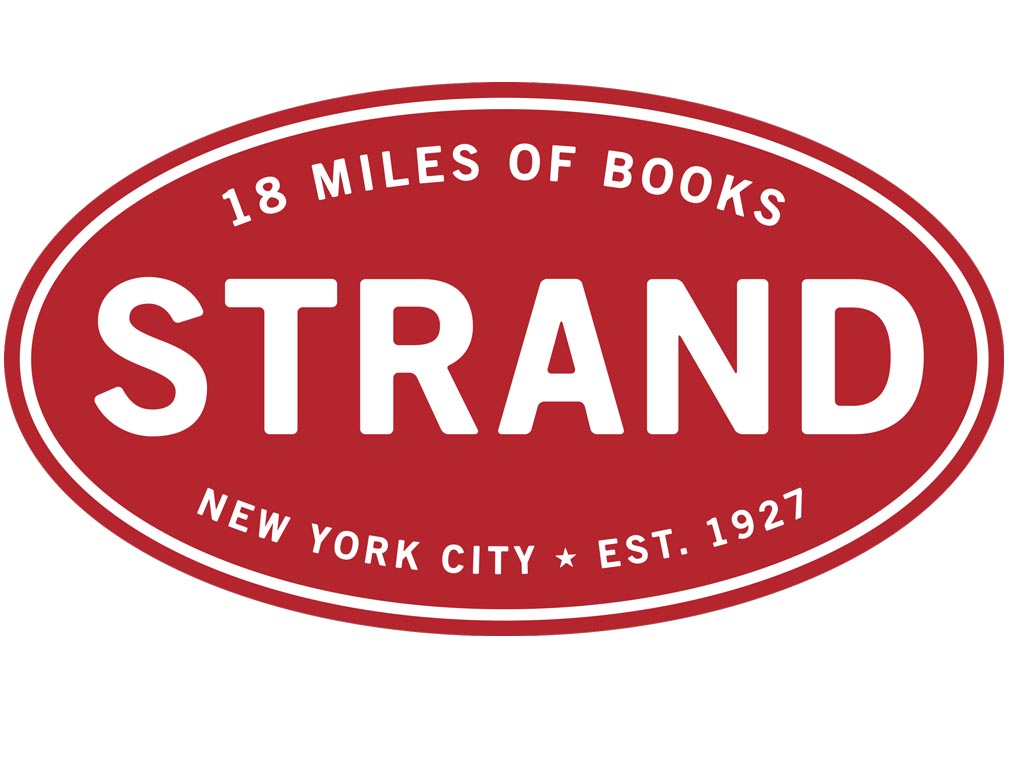
Read about The Strand in Off the Grid
The Regina Kellerman Award is presented each year in honor of the Society’s first executive director, who dedicated her inspiring career to the preservation of the architecture and built environment of the Village.
The Strand, a vital part of Greenwich Village for almost 90 years, is a family-owned business founded in 1927 by Benjamin Bass, as a used bookstore on the world-renowned Book Row.
The Strand remains one of the last remnants of Book Row, which as early as 1890 was known as a location for bookstores, and in its heyday consisted of 48 book stores along Fourth Avenue from Astor Place to Union Square.
The Strand was expanded by Ben’s son Fred, who moved the store to its current location at Broadway and East 12 Street in 1957. Fred still works at the store with his daughter Nancy.
Today the Strand sells not only used books but also recent releases and rare books, and has the largest selection of art books in New York City. Its four floors hold over two million books for sale over 18 miles of stacks. Its web business ships orders around the world. In addition to selling books, the Strand hold six events a week, hosts tours for children visiting its fabulous children’s department, works on set designs for theater and film, and even assembles personal libraries for clients.
GVSHP is honored to present The Strand Bookstore with a 2016 Village Award for its 89 years as a family-owned bookstore, a beloved neighborhood institution, and an international mecca for passionate book buyers and sellers.
|
| |
Save Gansevoort: Regina Kellerman Award Winner

Read about Save Gansevoort in Off the Grid
The Regina Kellerman Award is presented each year in honor of the Society’s first executive director, who dedicated her inspiring career to the preservation of the architecture and built environment of the Village.
GVSHP is proud to bestow the Regina Kellerman Award upon Save Gansevoort, an organization that follows in the long tradition of Greenwich Village activism.
Save Gansevoort was formed quickly in response to the threat posed by plans to demolish, replace, and build on top of several historic buildings in the Gansevoort Market Historic District. The group is led by long-time West Village activists, but mobilized and brought in a broad cross-section of the community, from long-time residents to newcomers, to fight a developer’s plan to drastically alter the historic block of Gansevoort Street between Washington & Greenwich Streets.
Save Gansevoort played a key role in informing the public about the proposal and helping to formulate a response. They helped inform their members about meetings and hearings and what they could do to affect the process. They worked with other neighborhood organizations to form strategies in response to the development and the developer’s arguments in favor, including extensive research to rebut arguments, reaching out to elected officials, and publicizing to the public the threat posed by the development.
They masterfully used their website, facebook, twitter, and an on-line petition to engage and inform, and to help shape the outcome of this battle.
Even after the LPC provided initial feedback about the proposal, Save Gansevoort helped come up with shrewd strategies to push the LPC and hold them accountable to following their own stated directives to the applicant.
Though the LPC process ended far short of the mark in this case, it also ended in a much better place than it began -- in no small part thanks to the work of Save Gansevoort. And the group is soldiering on.
They are committed to working with GVSHP and other allies to respond to any attempt to change the restrictive declaration on these properties, which are likely essential to the project coming to fruition.
For their dogged determination and inspiring leadership in fighting to preserve the historic character of the Meatpacking District and West Village , the Regina Kellerman Award is given to Save Gansevoort. The award was accepted by lead organizers Zack Winestine and Elaine Young.
|
|